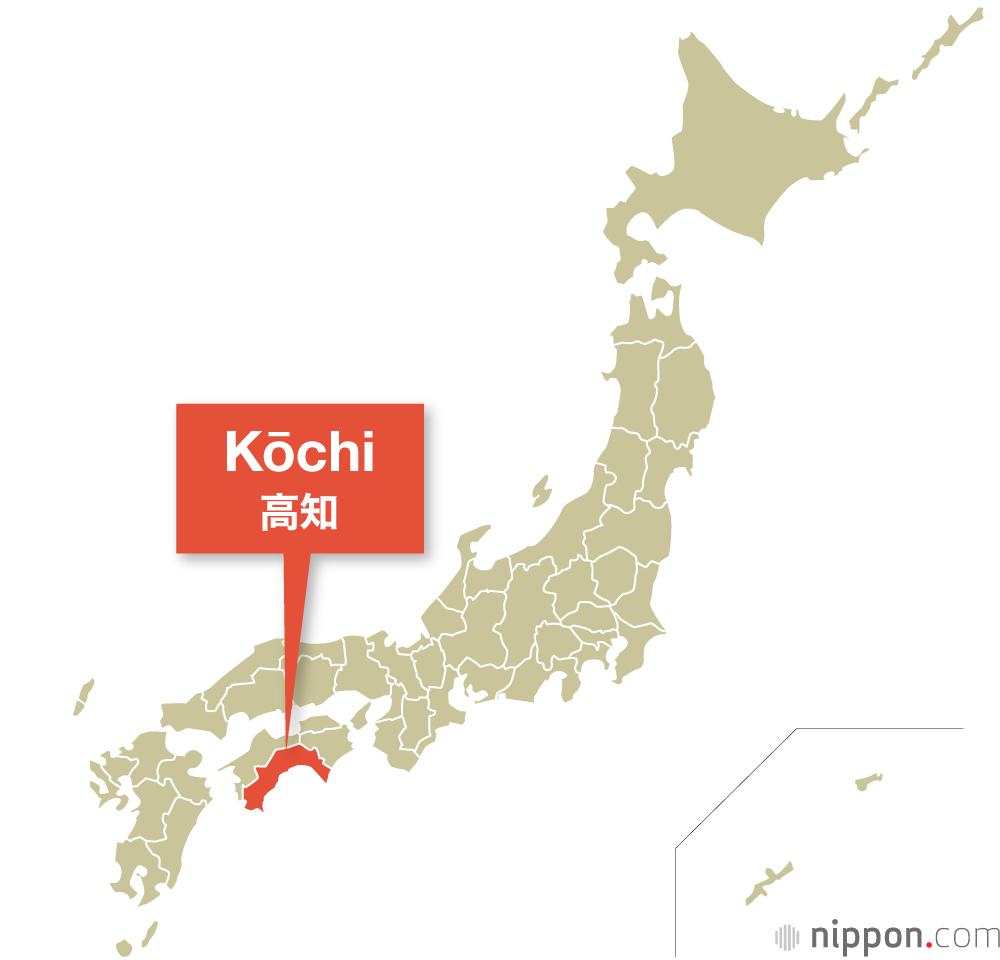Kōchi Prefecture
Banzai Japan
Idol Group
Visit there
Website
Kōchi, the largest of the four prefectures on the island of Shikoku, is famed for its natural splendor, including the pristine Shimanto River.
Kōchi is the largest of Shikoku’s four prefectures. Its arching southern coastline borders Tosa Bay and the Pacific Ocean, while the inland is largely mountainous and densely forested.
Much of the population resides in the centrally situated Tosa plain, where the prefectural capital of Kōchi is situated.
Kōchi Prefecture at a Glance
- Established in 1871 (formerly Tosa province)
- Capital: Kōchi
- Population: 692,000 (as of Oct. 2020)
- Area: 7,103 km2

Kōchi offers visitors many tourist attractions.
Its long coastline is marked by picturesque headlands, beaches, and other natural features.
In the mountains, the sprawling Tengunomori plateau along the border with Ehime Prefecture is dominated by the Shikoku Karst, and the Shimanto River, considered Japan’s last pristine waterway, flows in the southwest of the prefecture.
Kōchi is home to several temples on the henro pilgrimage route around Shikoku, and Kōchi Castle and Hirome Market, with its shops offering katsuo tataki (seared bonito) and other local delicacies, are popular stops in the capital.
Kōchi’s agricultural, forestry, and fishing industries account for a large portion of its economic output.
It is a major producer of yuzu, or Japanese citron, the scent of which is used to enhance the aroma of an array of items from bathwater to foods.
The prefecture is also known for its abundant hauls of bonito, traditionally caught with just a pole and line in a style called ipponzuri, along with a range of other marine products brought by the Kuroshio (Japan Current) that flows along its coast. Other important sectors include the manufacturing of industrial machinery, paper, and lumber.
Traditional manufacturing includes washi (Japanese paper), forged blades called Tosa uchihamono, and ceramics.
Kuroshio-kun, Kōchi’s official mascot, brings to mind the waves of the Japan Current (Kuroshio), which flows off the prefecture’s Pacific coastline.
Famous Figures
- Nakahama Manjirō (1827–98): Also known as John Manjirō, he was rescued by an American whaling ship when his fishing boat went adrift and ended up travelling to the United States, where he studied English and other subjects. Served as a translator and interpreter for the Japanese government.
- Sakamoto Ryōma (1836–67): Imperial loyalist known for brokering an alliance between the Satsuma and Chōshū domains (now Kagoshima and Yamaguchi Prefectures, respectively) that brought an end to the Tokugawa shogunate. He was famously assassinated by unknown figures while in Kyoto.